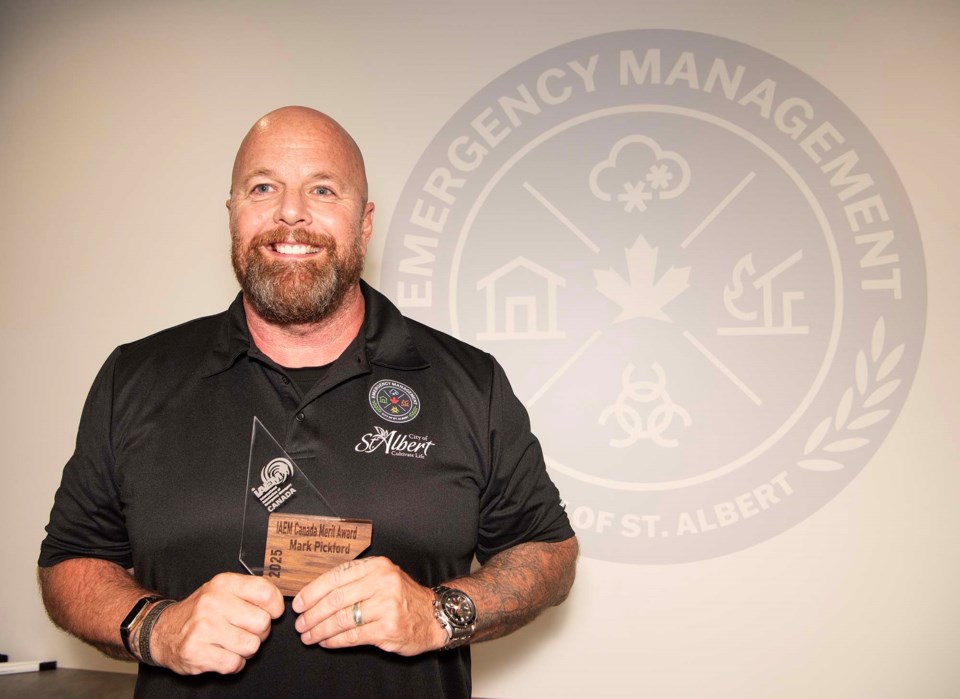A City of St. Albert manager has won a national award for helping his community prepare for disaster.
City of St. Albert emergency management manager Mark Pickford received the 2025 International Association of Emergency Managers (IAEM) Canada Council Merit Award for Excellence, Leadership and Innovation on Aug. 19 following a brief ceremony at Fire Hall 1. Pickford has headed up St. Albert’s emergency response department since 2022.
The award — a glass and wood trophy — recognizes exemplary contributions to the development of emergency management in Canada. Up to two are awarded each year.
Pickford’s award was the third his department has received this year. Public Safety Canada gave them one in February. The Canadian Association of Municipal Administrators followed up with a second in May.
This award was a testament to Pickford’s commitment to advancing emergency management in St. Albert and Canada, said Adryan Slaght, managing director of planning, infrastructure, and economic development with the City of St. Albert.
“Mark’s leadership has made St. Albert a more resilient and prepared community,” he said at the ceremony.
In an interview, Pickford said he was grateful to receive this award.
“This was a complete shock and surprise to me,” he said in an interview, as he hadn’t heard he had been nominated.
Being prepared
Pickford, a St. Albert resident, said he saw first-hand the challenges of emergency management during his 32 years with the Canadian military and the Alberta Emergency Management Agency — jobs that put him on the front lines of the 2016 Fort McMurray wildfire and the 2013 Calgary floods.
“I know what’s going to happen when bad things happen,” he said, and what communities need to do to make those bad things better.
One of those to-do items was having a way to quickly assess damages after a disaster. When a fire sweeps through a community, everyone wants to know if their house is still standing, and they won’t want to wait days to find out, Pickford explained.
He and his team developed a Rapid Damage Assessment Tool as a solution. It’s an app that lets users see what a street or property looked like pre-disaster so they can tell responders what’s destroyed and what’s not, allowing staff to figure out what to fix first.
Communities also need to train for emergencies. Pickford has organized many training exercises in recent years, including last December’s active shooter simulation at the Jack Kraft facility — an event which featured drones, helicopters, hundreds of police, paramedics, and volunteers, and a simulated explosion. He also brought in the Everbridge 360 communications system so incident commanders can reach every city employee at once during an emergency.
Pickford was also lauded for his work on the city’s Know Your Zone website, which was the first of its kind in Alberta. The website features a colour-coded map that shows residents if their street is under an evacuation or shelter-in-place order.
Pickford said city crews got practical experience with emergencies last year with the train derailment in March and the year before by hosting about 835 evacuees from the Northwest Territories. Next April will see crews simulate a dangerous chemical spill.
It’s always disheartening when people don’t prepare for an emergency and end up at evacuation centres with nothing, Pickford said. He encouraged residents to have a 72-hour emergency kit ready in case they need to escape danger.
“The more our residents are prepared, the better off it is for everybody.”
Visit stalbert.ca/city/eps/preparedness for more on disaster preparation.




